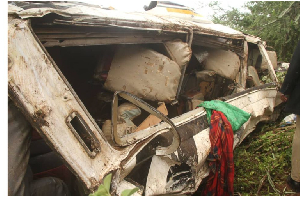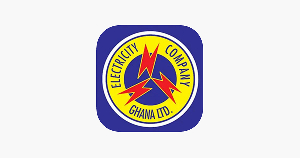A GNA feature by Albert Oppong- Ansah
Tamale, March 24, GNA - It was the Thursday evening of May 23 1991 when Agya Yaw Nkrumah who was stuck in his sick bed, called his two children to offer them the orientation of their lifetime. The 86-year- old man told his curious children: "My kids! Lend me your ears; throughout my life, what has made me who I am today is that I heeded the advice passed on to me by my father."
"It is always the best to 91Make Hey Whiles the Sun Shines'," w= as exactly what my late Dad told me and I leave you with the exact words."
This piece of advice from a dying father to Ama Nyarkoa, 25 years old and Yaw Nkrumah Junior, 20 is still relevant today. Information at the African Studies Department of the University of Ghana explained that, Hey is fresh grass specially dried and kept by pastoralist to be used to feed livestock during dry season when grass is difficult to come by.
The idiom therefore plays a vital role in the governance of Ghana especially in solving the many developmental challenges including, the annual indiscriminate bush burning and perennial floods, which tend to destroy lives and property.
Floods impact in Ghana
Last year the National Disaster Management Organisation (NADMO) confirmed that about 11 people died as a result of floods in some parts of Ashaiman and Tema in the Greater Accra Region. 12 people were also found dead, at Agona Swedru in the Central Region and one in the Volta Region through the 2010 floods.
In 2007 the Northern, Upper East and Upper West Regions was also devastated by marauding flood waters demonstrating how climate change undermines development investments.
The disaster affected 317,000 people, 1,000 kilometres of roads were destroyed, 210 schools and 45 health facilities damaged, and 630 drinking water facilities devastated or contaminated. Direct emergency funding was valued at $25 million.
Mr Issifu Salisu Be-Awuriba, Central Gonja District Chief Executive told the Ghana News Agency in an interview that the flood that struck his area in 2010 was the first catastrophic environmental calamity which displaced 33, 305 people while 8, 811, households were affected.
He said 26, 822 farmlands were submerged, 65 schools collapsed, 15 boreholes were destroyed, 1,109 livestock were carried away while some 50 culverts were washed away.
Mr Be-Awuriba observed that "the flood has brought hunger and poverty to the affected communities rendering most of them homeless and bringing economic activities to a halt.
The assembly need about GH¢ five million to resettle the displaced persons and to rebuild the collapsed school blocks." Why these problems and the impending danger?
Dr Richard W. Spinrad, Assistant Administrator, Office of Oceanic and Atmospheric Research of the National Oceanic and Atmospheric Administration, London said due to human activities such as industrialisation which occurred about 100 years ago, had change the natural environmental pattern (Climate Change) which had led to many negative impacts including rising level of the sea.
Climate Change refers to the shift in average climatic parameters and/or in a magnitude of climate variability that are observed and persist over an extended period of time (typically decades' or longer).
The concept could also be explained as the long term changes in climate directly and indirectly caused by human activities combine with those originating from natural evolution and variability. This definition is in line with that of the Inter-governmental Panel on Climate Change. There is clear evidence that many of our key economic assets 96 the coastal zone, agriculture and water resources 96 are affected by climate change, which is also affecting our social fabric in terms of poverty reduction, health and women's livelihoods. The combined impact is an obstacle to our continued development. Dr Spinard said global, statistics indicates that, sea levels rise is estimated at 0.18-0.59 metres by 2100 with the east coast of Ghana particularly at risk of flooding leading to shoreline recession and significant land area getting lost.
The areas to be affected most are Accra, Ada, Cape Coast and Keta. Dr Steve Duadze, a Senior Lecturer at the Department of Environment and Development Studies of the Central University College has predicted a decrease in the rainfall pattern of the country on an average of 2.8 per cent by the year 2020, 10.9 per cent by 2050 and 18.6 per cent by 2080.
Speaking at an annual week celebration of the Department of Environment and Development Studies of the Central University College, he explained that the increased global temperature would cause the melting of glaciers, leading to a significant rise in average sea level and exposing low-lying coastal cities and cities located by tidal rivers to frequent and severe floods.
Dr Duadze said if the rate of fossil fuel consumption and deforestation did not change or reduce, warming trends were likely to continue while global temperature might continue to increase between 1.4 degrees Celsius and 5.8 degrees Celsius.
"Averagely, it is estimated that temperature will continue to rise by about 0.6 by 2020, 2.0 by 2050 and 3.9 by 2080," he said. A careful study of the daily whether forecast by the Ghana Meteorological Service Department telecast on Ghana Television news indicates that the country now records high temperatures all over the country signaling the harsh effects of climate change.
For instance on Monday March 7, 2011 the Northern Region recorded temperatures between 37 and 41.
For the past 10 years, flooding has become a major enemy of the development of Ghana as governments and international bodies continue to pump huge money into helping flood victims to get back on their feet through the provision of relief items like blankets, food items and other household stuff through NADMO.
The trend and the impact of floods continue to escalate, hence the need to reduce the trend.
A GNA news report on Ghana Meteorological Agency on March 9 2011, said the rains were expected to start between February 19 and March 1, in the Forest and Transition Zones; March 6 and March 16 in the Western Coastal Zone; March 18 and March 28 in the Eastern Coastal Zone and April 9 and April 16l in the North-Western Zone. Mr Charles K.A. Yorke, Head of Research Department of the Agency who signed the release said the Western Coastal Zone is expected to receive from 850 millimetres to 1,100 millimetres of rain; North-Western Zone from 650 millimetres to 1,100 millimetres; Forest and Transition Zones are to receive from 800millimetres to 900 millimetres and Eastern Coastal Zone from 500 millimetres to 600 millimetres of rain.
How can we adopt to the increasingly floods and the various Flood Intervent= ions At the sub region, Ghana and Burkina Faso are to establish a joint Upper Volta Basin Management Agency (UVBMA) in=A0both countries to manage the seemingly perpetual floods in the northern parts of Ghana due largely to excess water spillage from the Bagre Dam in Burkina Faso.
The UVBMA would be mandated to establish a blueprint by the appropriate governmental agencies within each country to mitigate floods and control water flow as well prepare a national framework for the integrated development and utilisation of the Volta and Oti Water Basins in Ghana, which is expected to serve as a measure to reduce the impact of the spillage.
The Parliamentary Select Committee on Employment, Social Welfare and State Enterprises made the recommendation at the end of a four-day working visit to parts of the three northern regions worst hit by the 2010 floods.
A communiqu=E9 issued by the Committee said a monitoring system was to be put in place to check water management, harvesting and conservation devices in both countries.
"In the long term there is the need to strengthen the institutions responsible for managing Ghana's major rivers and water basins, especially in the northern savannah, which is prone to perennial floods and droughts," the Communiqu=E9 stated. According to the National Climate Change Policy, more than 80 per cent of the disasters in Ghana are thought to be the result of climate-related impacts: flooding, drought, pests, disease outbreaks, wind storms and extreme weather events that contribute to climate-induced migration.
Climate change means less predictable weather and a shift in both the intensity and frequency of weather events. As a result, knowledge of previous extreme weather patterns may no longer be a reliable guide to the future. The objective, therefore, is to build a climate-resilient society - a society that can rely on effective early warning systems, where every citizen understands climate hazards, and where the emphasis is on preparedness and prevention, rather than traditional disaster response.
Other initiatives that has being embarked on to mitigate floods includes clean up exercise to clear filth from=A0 chocked drains which in many instances Dr Alfred Okoe Vanderpuije, Accra Metropolitan Chief Executive and Madam Sherry Ayittey, Minister of Environment Science and Technology had been part of it.
Again successive governments continue to struggle to tackle worsening seasonal flooding that wreaks havoc in Accra and beyond. Most of the officials believe the sprawling settlements built on and around drainage channels and waterways are exacerbating the flooding. Clearing those structures is the only long-term solution, they say.
However previous demolition exercises had angered affected residents who complain that the authorities did not give property owners sufficient warning or compensation.
Human rights advocates have also argued that the forced evictions violated international human rights.
The Commission on Human Rights and Administrative Justice was quoted as saying that "When people lose their homes, their lives are shattered while many are displaced".
As the government presses on with efforts to reduce flooding, one would ask what is being done to reduce the impact of heavy floods in Northern Ghana as the country approach the raining season? Madam Spendlove=A0 Ziegbe, 28 and a mother of a seven months old baby lives five metres away from the White Volta in Makango, a suburb of Salaga District in the Northern Region.
Speaking in an interview with the Ghana News Agency (GNA) at Makango, Madam Ziegbe said, she had to salvage her baby six days after she gave birth.
"I never knew my house could be flooded because I have stayed here all my life. I have leant my lesson=85 I will move to higher grounds," she said.
Asked if she knew about the legislation that people should not build close to the lake, Madam Ziegbe said "If there is any law like that I have never heard of it from anywhere."
Another flood victim Adisa Mohammed, 45, a mother of 12 and a farmer also shared with GNA how her 10 acre farm was washed away by the recent floods.
"My husband is dead and the farm is our only livelihood as a family. I do not know how am going to pay my children's school fees," she said.
The National Level Datum of the Volta River Authority (VRA) has warned that people are not suppose to build in and around the perimeter of 280 feet of any of the authority's reservoirs. Dr David Perssey, a political activist said the effect of the perennial floods on the North which claims human lives and property could be reduced if stringent measures were taken to prevent people from building settlements close to the lake.
"One of the effects of climate change is torrential and unpredicted rains so going by that the issues is going to get worse. It is high time authorities=85 advise themselves," he said. Dr Perssey recommended the need for a rigorous education for the people close to the White and Black Volta, adding, 93It is not late to fix the people and the time is now, with the predictions from the meteor department".
Mrs Angela Tutuah Mensah Public Relations Officer of the Environmental Protection Agency told the GNA that what happens to women in distress situations like floods matters to the nation's economy.
Women produce 70 per cent of Ghana's subsistence crops, account for 52 per cent of our labour force and contribute 46 per cent of the total GDP.
Mrs Mensah said women tend to be responsible for household needs such as water and energy for cooking as well as food security. She noted that they were therefore highly dependent on local natural resources for their livelihood - all of which makes them particularly vulnerable to the impact of climate change. She therefore called on women associations, VRA and other stakeholders to educate women on the need to desist from staying close to the Volta Lake, saying statistics from post flood assessment indicates that women and children were the most affected. Districts close to the Volta Lake and susceptible to floods are West Gonja, East Gonja, Nanumba, Nkwanta, Kintampo, Atebubu, Krachi, Sene, Jasikan, Sekyere East, Hohoe, Afram Plains, Kpando, Asante-Akyem North, Kwahu South, Fanteakwa, Manya Krobo, Asuogyaman, Adidome, Dangbe West, Sogakope and Keta.
The good news is that the East Gonja District is making feverish efforts to prevent loss of lives and property during the rainy season. Mr Alhassan Mumuni, District Chief Executive told the GNA in Salaga that NADMO and the District Disaster Management Committee had started educating the people on the need to move up hill.
Asked if the Assembly had a technical expert to guide the people about the range of building? Mr Mumuni responded: "We don't have technical expert but in our estimation the distance we prescribed is not bad."
He said last year flood victims have been advised to move up hill. 93Some of them have moved but others have not than so. The strategy the assembly had employed is that only flood victims who do not build close to the river would benefit from building materials." Mr William Sam-Appiah, Director of Engineering Service at VRA in Akuse told the GNA that his outfit is running an educational policy through NADMO.
"How our policy operates is that we are in contact with officials of the Bagre Dam in Burkina Faso and the Ghana Meteorological Department so that we are abreast of the rain pattern. "We then relay the information to NADMO to embark on education campaign in the various districts," he said.
He said people were aware of the National Level Datum but because for so long the river had not gotten to that level people thought that was the end of the story.
Getting the fight against climate change right and solving the demonic errands of floods in the country is not a mere dialectical issue. It is a common sense approach that calls for concerted efforts to make the crusade a reality since as a nation we have to 93Make hay while the sun shines.
Opinions of Saturday, 26 March 2011
Columnist: GNA














